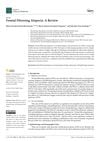My hair journey: I got my hair transplant after almost 5 years Progress Pictures 6/26/2025
A 27-year-old shared their hair transplant journey after using minoxidil and dutasteride for nearly four years. They underwent a 2600-graft surgery in London, costing £6450, and plan to switch to oral minoxidil during recovery.
View this post in the Community →
Similar Community Posts Join
5 / 1000+ resultscommunity Day 11- I have removed all Scabs
Eleven days after a hair transplant, the user has removed all scabs and plans to resume Oral Dutasteride and Oral Minoxidil. They will also start using a serum provided by the clinic and are sharing progress and clinic information privately to avoid negative comments.
community [22m] Is it time for a transplant?
A 22-year-old is experiencing aggressive hair loss despite using minoxidil and finasteride and is considering a hair transplant but lacks funds. The discussion includes advice on treatments like dutasteride, microneedling, and lifestyle changes, with mixed opinions on the timing and effectiveness of a transplant at a young age.
community A Logical, Step-by-Step Guide to Managing Androgenetic Alopecia (No BS)
Finasteride and minoxidil are recommended as first-line treatments for hair loss, with dutasteride and oral minoxidil as stronger options if needed. Hair transplants should only be considered after achieving stability with medication, and non-surgical options are suggested if medications are ineffective.
community Suffer so bad I want it to end
A 23-year-old is distressed about hair loss despite using dutasteride and oral minoxidil and is considering a hair transplant in Turkey. Many suggest therapy, hair systems, or acceptance, emphasizing mental health over appearance.
community NW6 - 12 months progress - Dut/Oral Min/2% Keto Shampoo
User shared 12-month hair loss progress using oral minoxidil, oral dutasteride, and 2% ketoconazole shampoo. They detailed their medication regimen and dosages.
Related Research
6 / 1000+ results
research Frontal Fibrosing Alopecia: A Review
Frontal Fibrosing Alopecia's cause is unclear, affects mainly postmenopausal women, and current treatments focus on stopping hair loss rather than regrowth.

research Frontal Fibrosing Alopecia in Men: A Review of the Literature
Frontal fibrosing alopecia in men is often misdiagnosed and needs better diagnostic criteria and treatment strategies.

research Minoxidil: A Comprehensive Review
Minoxidil effectively treats hair loss, especially androgenetic alopecia, but needs more research for better understanding.

research Hair Loss: A Clinical Update
The article concludes that a thorough diagnosis and treatment plan, including medications, non-invasive methods, or surgery, is important for managing hair loss, with a combination of minoxidil and finasteride being particularly effective.

research Frontal Fibrosing Alopecia: Efficacy of Treatment Modalities
Some treatments can stabilize Frontal Fibrosing Alopecia, but more research is needed to find effective treatments, and hair transplants often fail.

research Guidelines Based Management of Androgenetic Alopecia
The document concludes that personalized treatment plans for hair loss in Asian men are necessary and more research is needed to develop effective guidelines.